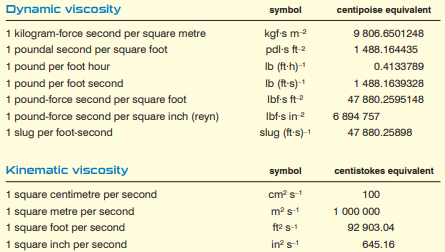What is Viscosity?
Viscosity is defined as the quantity that represents a fluid’s resistance to flow. To put it in more simple terms, viscosity is the friction between the molecules of the fluid. We usually relate to the viscosity of a liquid by measuring the “thickness”. For example, we can state that honey is “thicker” (meaning a higher viscosity) than normal water.
Viscosity is represented by the symbol η “eta” and the use of the Greek letter mu (μ) is also common. Furthermore, viscosity is also known as dynamic viscosity or absolute viscosity. Apart from this we also deal with terms like kinematic viscosity or momentum diffusivity. The main difference between kinematic and dynamic viscosity is that dynamic viscosity is the measurement of fluid’s internal resistance to the flow while kinematic viscosity is the ratio of dynamic viscosity to the density. Now that we have learned some information about viscosity, let’s study the unit of viscosity below.
|
Unit of Viscosity |
|
| Si Unit | Pascal seconds (Pa·s) or kg·m−1·s−1 |
| CGS Unit | Poise (P) |
|
Unit of Kinematic Viscosity |
|
| Si Unit | square meter per second or m2/s |
| CGS Unit | Stokes (St) |
SI Unit of Viscosity
- The SI unit of viscosity is the pascal second (Pa·s) or kg·m−1·s−1.
- The SI unit of kinematic viscosity is square meter per second or m2/s.
CGS Unit of Viscosity
- The cgs unit of viscosity is poise (P) and this name has been used in honor of a French physiologist Jean Léonard Marie Poiseuille. It is also commonly used particularly in ASTM standards, as centipoise (cP).
- The cgs unit for kinematic viscosity is stoke (St) and has been named after Irish mathematician and physicist Sir George Gabriel Stokes. Sometimes the unit centistokes (cSt) is also used.
Other Common Viscosity Units
Some non-standard units include the Reyn which is a British unit of dynamic viscosity.
Earlier, kinematic viscosity was measured using Saybolt viscometer where the units were expressed in Saybolt universal seconds (SUS). Other abbreviations such as SUV (Saybolt universal viscosity) or SSU (Saybolt seconds universal) are sometimes used.

Stay tuned with BYJU’S to learn more interesting Physics topics with the help of engaging video lessons.
Related Articles:
| Unit Of Resistance | Unit Of Conductivity |
Frequently Asked Questions
State Newton’s law of viscosity.
Newton’s law of viscosity states that shear stress between the adjacent layers of the fluid is proportional to the velocity gradients between the two layers.
What will be the viscosity of fluid when the fluid is at rest?
The viscosity of fluid when it is at rest will be 1 Poise. Viscosity is not dependent on the state of the fluid. Therefore, if the fluid is at rest or in motion, 1 Poise will remain constant.
Mention the factors on which viscosity depends.
Following are the factors on which viscosity depends:
- Area of contact between the two adjacent layers
- The velocity difference between the two adjacent layers
- Distance between the two adjacent layers
Convert 1 Poise into N.s.m-2.
Give examples of Newtonian fluids.
Water, honey, and organic solvents are examples of Newtonian fluids.




Comments